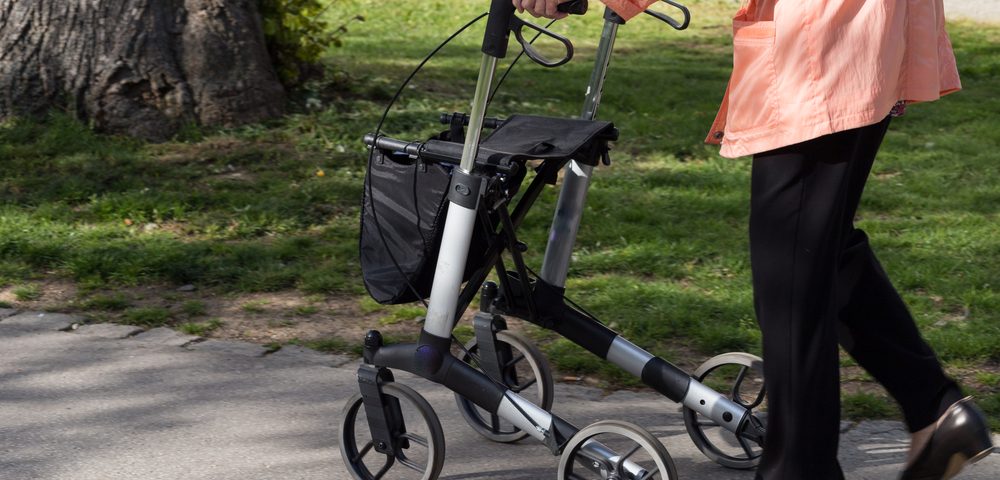Struggling with My Reluctance to Use Mobility Aids
Written by |

Subluxations and dislocations are frequent complications of Ehlers-Danlos syndrome.
Over the past year, my roving joints have made grocery shopping more painful. I have also suffered some acute bruising of my ego from squatting in the grocery store checkout line to relieve the symptoms of postural orthostatic tachycardia syndrome. This has me considering mobility aids. I can hug a shopping cart for a quick spin through the market, but serious shopping has me using the stores’ electric scooters more often.
Unfortunately, scooters have some considerable downsides. They are slower than I am and draw more attention than I want with their beep-beep-beeping when I’m backing up to look at something I missed or exit an obstructed aisle. They are also subject to unavailability, and the battery can die before I reach the checkout.
I brought this up with one of my specialists during our last visit and she suggested online grocery ordering to avoid grocery shopping altogether. It is a most excellent suggestion and I am on board with it. However, I live in a rural area and my local grocery stores do not yet have online ordering.
I decided it’s time for a mobility aid of my very own, and a rollator fit the bill quite nicely.
Ah, but then there are the comments: “You don’t look sick!” “You don’t look like you need a parking placard!” “You’re too young for a walker!” Are these the words clucked under the breath of an unkind stranger who is unable to mind her own business in a parking lot? No, these are things I’ve said to my very own self.
Two years ago, I wrestled for several months over the decision to apply for what my state calls a Persons with Disability Permanent Parking Placard. Accepting help of any kind had always been difficult for me; I was brought up to power through under my own steam and to never give up. But that wasn’t my problem.
I didn’t feel that getting the placard was resigning myself to defeat. In fact, I looked at it as a symbol of freedom. What gave me pause was that while it hurt to move, I could still move; I didn’t feel “disabled enough” to deserve a placard. My doctor relieved me of those feelings when she explained that my conditions did, indeed, qualify me for the placard. I’m glad that I went through with it and wish I had sought it out sooner.
I am out and about more frequently because parking is no longer an obstacle to overcome, and I no longer expend the bulk of my energy walking to and from my car. On days that I am more mobile, I don’t park in the handicapped spots.
I thought I had gotten over myself after coming to grips with the parking placard. I thought that using a store’s complimentary electric scooters would have settled the issue for me. I was mistaken. All the negative self-talk flooded back in, worse than before, and I agonized over getting the rollator for about a month before making my purchase.
I wish I could tell you that all my reservations evaporated instantly when I received it, but I can’t. I’m still struggling with using it. On high-pain days, it’s a no-brainer. It is getting easier to use it for grocery shopping thanks to a wonderful store manager (more on that in an upcoming column), but I’m still working through it. I’ll keep you updated.
***
Note: Ehlers-Danlos News is strictly a news and information website about the disease. It does not provide medical advice, diagnosis, or treatment. This content is not intended to be a substitute for professional medical advice, diagnosis, or treatment. Always seek the advice of your physician or other qualified health provider with any questions you may have regarding a medical condition. Never disregard professional medical advice or delay in seeking it because of something you have read on this website. The opinions expressed in this column are not those of Ehlers-Danlos News or its parent company, Bionews Services, and are intended to spark discussion about issues pertaining to Ehlers-Danlos.



Leave a comment
Fill in the required fields to post. Your email address will not be published.